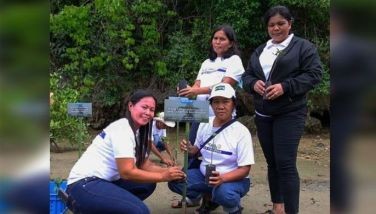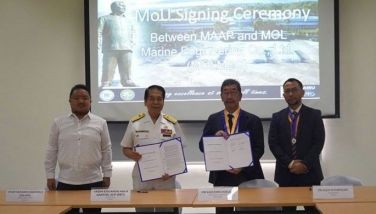17 towns, 3 cities prone to climate change blows
CEBU, Philippines - Out of the 52 towns in Central Visayas identified as vulnerable to climate change impacts, 17 are in Cebu.
Three Cebuano cities are also prone to the aftermath of the climate change phenomenon.
This was according to the assessment conducted by the Protected Areas, Wildlife and Coastal Zone Management Services-7 of the Department of Environment and Natural Resources-7.
The 17 towns in Cebu are Tabogon, Borbon, Sogod, San Francisco, Catmon, Carmen, Compostela, Cordova, San Francisco, Minglanilla, Sibonga, Argao, Dalaguete, Alcoy, Oslob, Boljoon and Santander.
The three cities prone to climate change impacts are Lapu-Lapu, Naga and Carcar.
Bohol province also has 17 towns, namely Panglao, Baclayon, Albur, Loay, Lila, Dimiao, Valencia, Guindulman, Anda, Duero, Candijay, Mabini, Loon, Maribojoc, Calape, Talibon and Bien Unido.
In Negros Oriental, the towns identified were as follows: Sibulan, Bacong, Dauin, Zamboanguita, Siaton, Sta. Catalina, Bayawan and Basay.
In Siquijor, the municipalities of Enrique, Villanueva, Maria, Lazi, San Juan, Siquijor and Larena were also identified.
Isabelo Montejo, DENR-7 regional executive director, in a statement said these areas should give mangrove rehabilitation and reforestation a priority in order to lessen the hazards and impact of climate change.
Montejo said that among the hazards caused by climate change include increasing air and sea surface temperatures, storm surges, sea-level rise, more intense and frequent typhoons, changes in amount and pattern of rainfall, and ocean acidification.
He said that they are releasing the list to encourage the local government units in these areas to be one with them in implementing environmental programs in their respective communities to lessen the hazards that climate change can bring to their constituents.
The environment agency has been encouraging local government units, especially those situated in coastal areas to plant mangroves.
Mangroves are salt-tolerant, woody, seed-bearing plants that provide nursery grounds for fish, prawns and crabs, and support fisheries production in coastal areas. They have extensive rooting structures that slow water movement to trap sediments.
DENR-7 information officer Eddie Llamedo said that mangroves anchor the soil and also absorb and dissipate the energy of the waves, slowing their passage in land. (FREEMAN)
- Latest
























